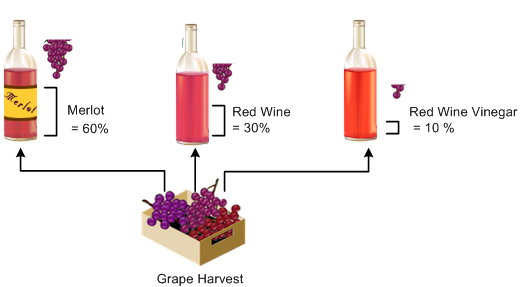Understanding EUR Definitions
EURs are codes that you assign to the end product of the harvested crop. For example, when you are growing broccoli, 60 percent of the crop may be sold in bulk to local producers while the remaining 40 percent is used for the fresh market and is packaged by crowns, spears, and florets.
You can designate similar or related EURs as subordinate to a parent EUR. For example, a parent broccoli EUR might have several subordinate EURs if the parent broccoli is to be used in several broccoli end lots.
EURs are used to support the production planning process only.
When you create an EUR definition, you define information about the end products to which you allocate lots or blocks. You must create a short code and attach a brand code. You can specify the harvest period, the primary appellation, wine family, and variety for the EUR. If the EUR that you are defining is a sub-EUR, you can enter a parent EUR.
You extend the EUR definition by defining a set of planning assumptions that enable you to analyze possible planning scenarios based on marketing requirements. However, these planning assumptions are for information only, and the system does not validate them. You can set up the following assumptions for an EUR:
Assumption |
Description |
Table |
|---|---|---|
Harvest assumptions |
Parameters for the quality results of the bulk material that is assigned to the EUR. |
Harvest Assumptions (F31B0710) |
Loss assumptions |
Parameters for permissible loss thresholds to estimate the quantity of bulk material that is required for the EUR. |
EUR Loss Assumptions (F31B0730) |
Planning assumptions |
Ability to set up a plan to purchase bulk material for various types of activities in different types of quantities. Addition and removal of other EURs. |
Planning Assumptions (F31B0740) EUR Cull and Cascade (F31B0741) |
Conversion rate assumptions |
Conversion rates that are used for planning assumptions. |
EUR Conversion Assumptions (F31B0760) |
You can edit an EUR definition only if you have not created an EUR profile version. When an EUR profile version exists, you can view the EUR definition, but the Edit EUR Definition form becomes read-only, preventing you from making any changes to the EUR definition. You can delete an EUR only if it was never used.
This diagram illustrates the EUR of a crop of grapes:
